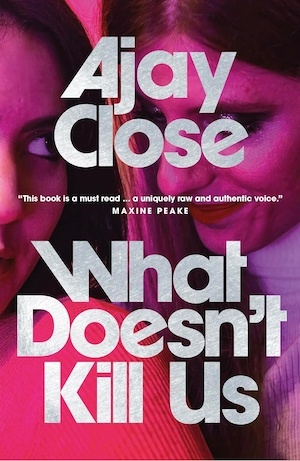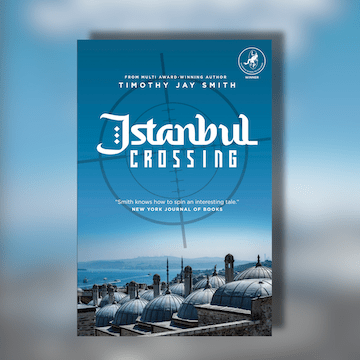
Ajay Close’s new crime thriller is a work of fiction inspired by the notorious Yorkshire Ripper case of the 1970s, which gained huge media coverage and prompted a massively inefficient manhunt. In that case, the police eventually identified the killer, but were severely criticised for the many failings of their investigation.
A journalist and author, Close’s fictional treatment contains elements of a police procedural, as the authorities stumble along almost completely devoid of clues and full of misplaced emphases. What sets this book apart, though, is the equal, if not greater, attention to the cultural milieu in which the crimes occurred. In that respect, it is a scathing social history.
Close has achieved an inspired juxtaposition here, using as her principal protagonist young Police Constable Liz Seeley. Due to a shortage of personnel at her home precinct of Bradford, west of Leeds, Seeley is attached to the task force investigating a series of prostitutes’ murders. In this new temporary role, she functions more as a detective than a typical patrol officer. She knows something about mistreated women herself, and to escape her abusive boyfriend, she relocates to a communal house in Leeds, occupied by six feminists.
The attitude toward women that Liz experiences in the police department – condescending, salacious, misogynistic – is a dark side of male behaviour. Yet these are the ‘good guys.’ They refer to the killer’s victims as slags, bags and other pejorative terms. Even worse, they don’t take much interest in the dead until the murder of a middle-class girl who is most definitely not in the sex trade.
Liz realises her job would be a deal-breaker for her new housemates, so she keeps it secret. The longer she holds this secret and the more she’s exposed to their disdain for the ‘pigs,’ the harder it is to reveal it. And the harder it becomes to mask her opinions in the sexist police bureaucracy: eight already dead; nine, soon enough; and victim-blaming the persistent tone of the investigation. Liz is trapped between two behavioural and attitudinal extremes.
Although the housemates’ backgrounds and attitudes differ in many ways from hers, Liz likes these women. Among them is an art student, Charmaine, and part of the story is from her perspective. Charmaine is the only black woman in the bunch and is trying desperately to do well in her course so she can gain a placement at a formal art college. Charmaine’s experience introduces yet another dimension of discrimination and prejudice.
The story takes place in the 1970s, a time of rising feminism, and incorporates many of the tropes of that era. They come out in the women’s ‘consciousness raising’ discussions, a few transcripts of which are included in the text. Where did these transcripts come from? Because of the insulting way the participants are described at the head of the transcripts, it appears their conversations are being recorded, something Liz does not know.
The women aren’t devoid of a sense of humour, and laughter and light-hearted banter are there, which you especially appreciate as you grow to understand and like the well-drawn personalities. Some of the police interactions are funny too, when they’re not just mean-spirited. The equilibrium of the household is upset when a new face appears at the dinner table, a woman named Rowena, who is much higher in the pecking order of activist radicals. She takes over the household and plans demonstrations, attacks on porn outlets and other increasingly illegal actions. The shift from outraged talk to direct action puts Liz in a devilish position.
As I was reading, I thought this book wouldn’t appeal to male readers, who might rebuff the criticism and believe the women should lighten up. Despite this risk, Close never pulls her punches. As someone who lived through that era, I was strongly reminded of the constant barrage of overt sexism that women were subjected to. At work. On the street. In their families. While male readers might want to give themselves a pass, because they don’t share those extreme beliefs or behaviours, they undoubtedly have seen it, may have tolerated it, and very possibly laughed it off, even if uncomfortably. In susceptible minds, endemic disrespect and hostility end up where Close’s investigators find them.
It’s a bit of a difficult read in the beginning because Close uses the street language and slang of working-class and slightly above Yorkshire residents of 50 years ago. Although it reads as absolutely authentic, and I believe I understood most of what they were talking about, I probably missed some things. But I grew to believe it was well worth my efforts.
What Doesn’t Kill Us is an important book, especially when we receive too-frequent reminders of how willing some people still are (people who ought to know better) to trot out the old prejudices and slurs, half a century later.
Also see The Red Riding Quartet by David Peace, or Eva Dolan’s This Is How It Ends.
Saraband
Print/Kindle
£7.99
CFL Rating: 5 Stars









